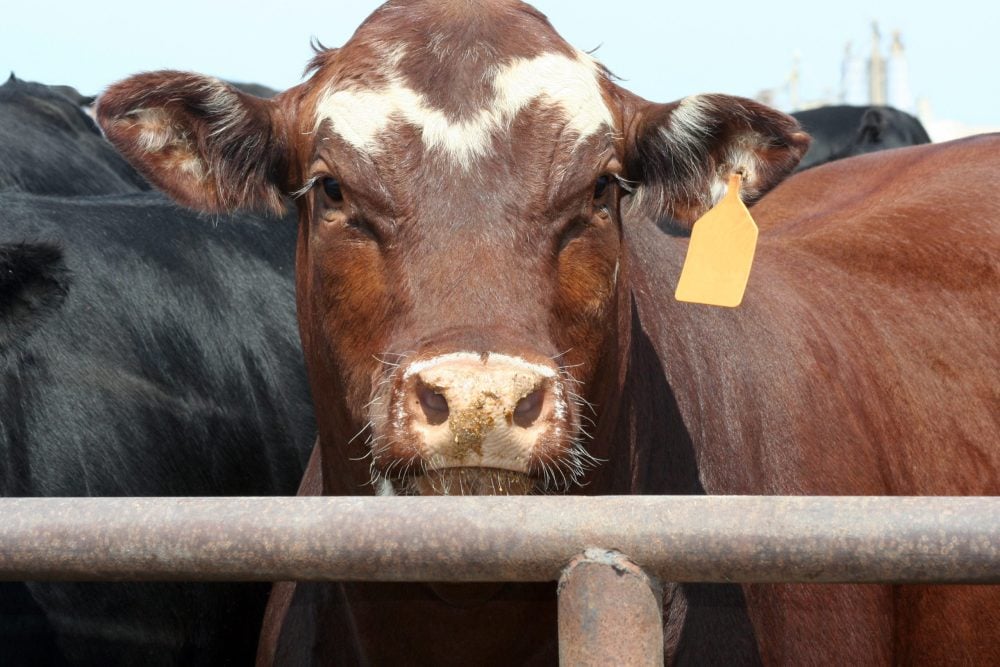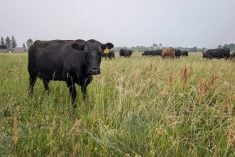Canadian food processing giant Maple Leaf Foods has laid out its plans to build two new larger-scale facilities and consolidate more of its operations in a “value creation” strategy.
The Toronto-based meat processing and baked goods company, Canada’s fifth largest food firm by retail sales, announced a five-year plan late Tuesday that it expects will deliver “substantial earnings growth” in each of the next five years.
The value-creation plan is expected to “enable Maple Leaf Foods to further address what we believe is a structural shift in currency which has caused a productivity gap for Maple Leaf — and, indeed, many large Canadian manufacturing companies — relative to U.S. competitors,” CEO Michael McCain said in a release Tuesday.
Read Also

U.S. livestock: Cattle futures plunge daily limits on beef price fears
Reuters — Most Chicago Mercantile Exchange live cattle and feeder cattle futures contracts fell their respective daily limits on Friday,…
The company’s near- and longer-term initiatives are meant to “improve productivity, deliver higher margins consistent with U.S. branded food companies, and establish sustainable competitive advantage,” he said.
Some parts of the near-term (2010-12) plan are already underway, the company noted. One of the two larger-scale operations noted Tuesday was announced in February: a $100 million Canada Bread “mega-bakery” to be built at Hamilton and commissioned in mid-2011.
The second project, the company said Tuesday, will be a new larger-scale prepared meats facility, for which construction is expected to begin at an as-yet unnamed location in 2012.
The two plants fit in the value creation plan as “strategic capital investments in new manufacturing capacity and technology,” during which time the company said it “contemplates a series of plant consolidations.”
That process is partly underway also, as Maple Leaf announced in January it would shut three Toronto-area Canada Bread bakeries by 2013 and shift their production to the planned Hamilton plant.
The larger, centralized meat processing plant will also involve a “first stage facilities rationalization” across the company’s prepared meats network, the company said, but didn’t provide more specifics.
By the end of its new initiative, the company expects to have shifted its volumes into “more productive” plants, increasing the amount of production in kilograms per year to 2.2 times its current level and boosting productivity in kilograms per worker by 1.6 times.
“Little or no investment”
Beyond those projects, the company said, its plan “includes several initiatives that are expected to increase margins in the near term, of which several require little or no capital investment.”
Among those are “pricing and normalization of trade promotional activity (and) simplification of bakery and meat products formulation and manufacturing.”
Price increases this year are expected to offset raw material costs and “protect and increase margins in our prepared meats and bakery businesses,” the company said.
And “normalizing” its promotional trade spending in further-processed meats is also a priority, as that spending was boosted significantly during the company’s 2008 listeria scare in cold cuts and the massive product recalls that followed.
The plan also calls for Maple Leaf to reduce “complexity” in its operations by standardizing its product formulations and sizes, as a way to cut down on product line changeovers and related costs at its plants.
Maple Leaf said its board had thought about other alternatives, such as investing more in its current plants, or spinning off its bakery from its protein (read: meat) operations.
But the plan its board approved “creates a cost-competitive, viable and sustainable business” and “delivers shareholder value far in excess of other alternatives,” the company said.
Investing more heavily in its existing plants would “not solve the productivity gap or create a sustainably competitive business,” the company said in a presentation. Separating its meat and bakery businesses would “create negative synergies,” it added, and besides, Maple Leaf is “a highly integrated business, not a holding company.”
In the longer term (2012-15), the company said it would be “establishing (a) low-cost supply chain” and realizing the benefits from the Hamilton operation while “accelerating innovation and growth.”
Balance sheet
Within the next five years, Maple Leaf said, it expects its plan will boost its EBITDA (earnings before interest, taxes, depreciation and amortization) margin by more than 75 per cent, from seven per cent currently to 9.5 per cent in 2012 and 12.5 per cent in 2015.
The company now has “a clear and achievable plan to deliver significant earnings growth now and through the next five years, yielding a very substantial return to shareholders,” McCain said Tuesday.
“We intend to finance these initiatives through internal cash flow and debt capacity without issuing equity, while maintaining an investment-grade balance sheet throughout the process.”
The plan also follows a significant shift in the ownership of the company. One of its main shareholders, the Ontario Teachers’ Pension Plan, moved in August to sell what amounts to an 11.4 per cent stake to West Face Capital, a Toronto investment management firm.
West Face said at the time it aimed to “work with the company to enhance value for all shareholders.”
Tuesday’s announcement isn’t the first strategic retooling in Maple Leaf’s recent history. During 2009 it “substantially completed” a restructuring of its meat operations and focused itself on higher-margin consumer packaged goods.
That restructuring, launched in October 2006, included putting its Burlington, Ont. pork plant up for sale, shutting its pork plant in Saskatoon and cancelling plans for a new facility there, with the goal of meeting all of the company’s fresh pork needs through its slaughter and processing plant at Brandon, Man.
















